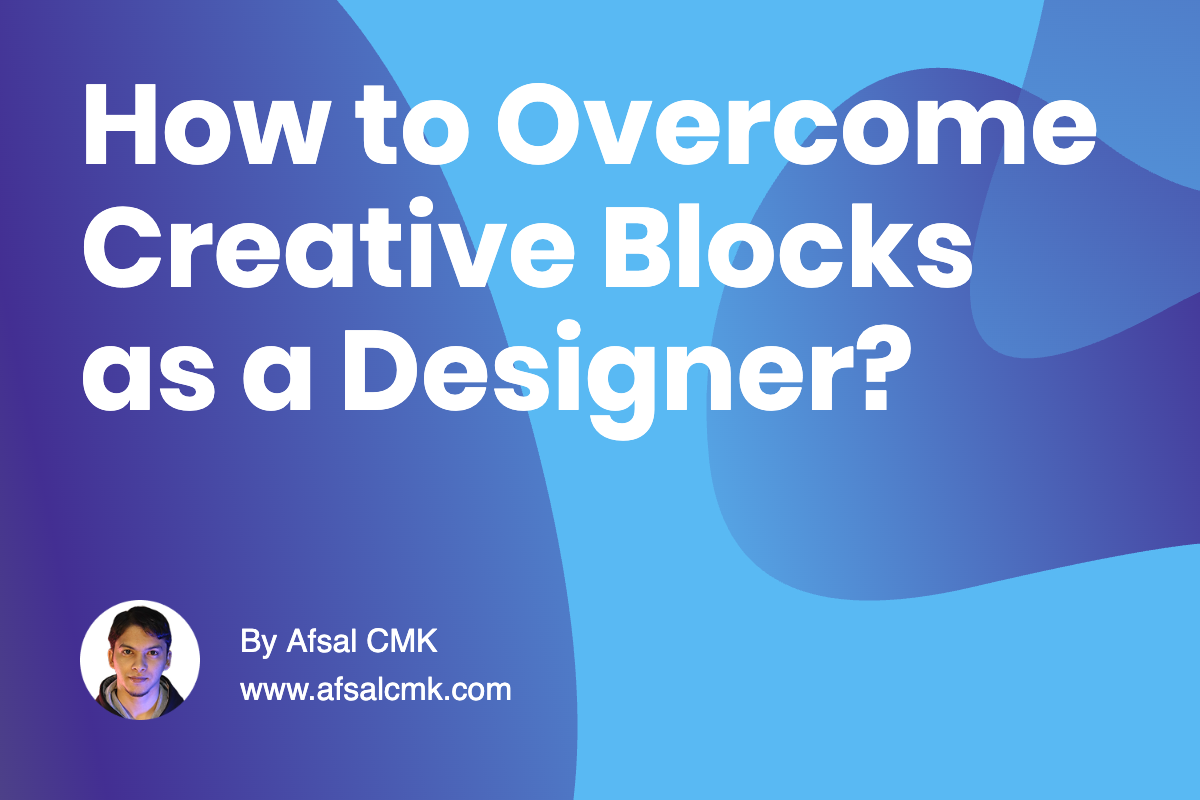
How to Overcome Creative Blocks as a Designer?
I've come across many designers who feel completely drained by their daily work. Every design they create seems to get pulled in different directions by multiple stakeholders, leaving the final result barely resembling the original idea. It’s exhausting, frustrating, and can make anyone question their creative abilities.
At first, it seems like the constraints of the job - business goals, technical limitations, tight timelines - are the enemy of creativity. But over time, I’ve realized that constraints aren’t obstacles; they are opportunities. They force designers to think sharper, make better trade-offs, and find solutions within limits. True creativity often emerges when the freedom to do anything is restricted.
Many designers feel blocked not because they lack ideas but because feedback is noisy. Six stakeholders, each with a different priority, can create confusion. The key is to look for the underlying goals behind every comment: faster interactions, increased engagement, error reduction, or stronger brand alignment. Filtering feedback through these goals transforms chaos into clarity.
As experience grows, so does the ability to navigate these situations. Asking questions like, “What problem are we solving here?” or “Which outcome matters most?” helps uncover the intent behind feedback. Instead of reacting to every comment, pause, reflect, and understand the bigger picture. This approach reduces stress and provides a roadmap for decision-making.
Creative blocks also become manageable when approached as mini design challenges. Each constraint, limitation, or conflicting request is a puzzle: how can a solution satisfy the user, the business, and the technical reality simultaneously? This reframing turns pressure into a productive exercise and restores a sense of control over the design process.
Another important aspect is confidence - knowing when and how to push back thoughtfully. Designers who can frame their choices clearly, showing how their designs meet both user needs and stakeholder objectives, maintain ownership of their work while aligning others. This skill comes from practice, observation, and learning how to communicate design reasoning effectively.
Iteration is also crucial. Creativity thrives in loops, not linear paths. Experiment, gather feedback, reflect, and iterate. Even within constraints, each cycle strengthens understanding, improves judgment, and uncovers better solutions. Some days will still feel blocked, and that’s natural. It’s part of the rhythm of design, and recognizing this prevents frustration from becoming permanent.
Ultimately, product design is about solving problems within boundaries. Constraints, feedback, and iterative challenges aren’t enemies - they’re the environment in which real creativity grows. Learning to navigate them with skill, patience, and reflection transforms a feeling of being blocked into an opportunity for innovation. Every challenging project becomes a masterclass in finding meaningful, practical, and human-centered solutions.